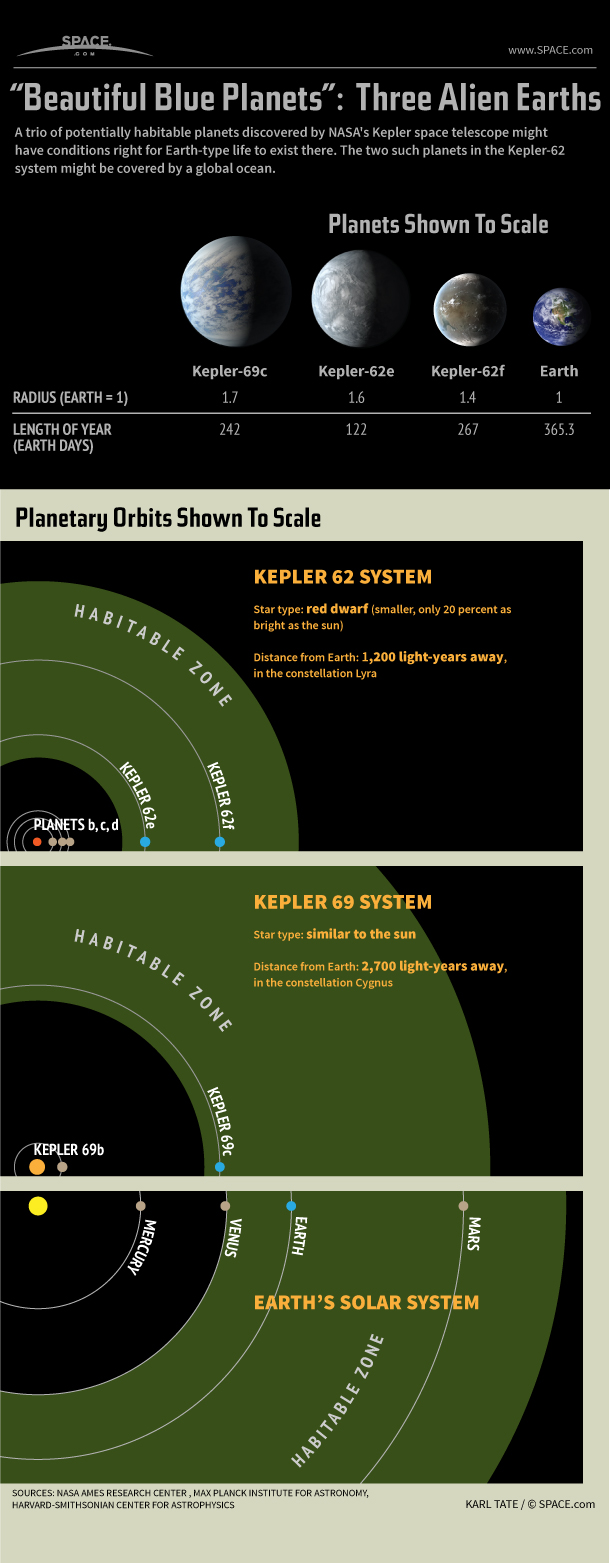3 Potentially Habitable 'Super-Earths' Explained (Infographic)

A trio of potentially habitable planets discovered by the orbiting Kepler space observatory have conditions that might be right for Earth-type life to exist there. The two such planets in the Kepler-62 system might be covered by a global ocean.
Full Story: Most Earth-Like Alien Planet & 2 Other Possibly Habitable Worlds
Kepler-62 is a red dwarf, only 20 percent as bright as the sun. Both Kepler-62e and Kepler-62f orbit within the star’s habitable zone, and both are likely covered by a global ocean. Kepler-62 is located 1,200 light-years away from Earth, in the constellation Lyra. [See photos of the potentially habitable worlds]
The Kepler-69 system contains one known planet in that star's habitable zone. Kepler-69 is a sun-like star located 2,700 light-years away, in the constellation Cygnus.
Two Alien Oceanic Earth-Like Planets Found? | Video
The $600 million Kepler spacecraft was launched in March 2009 to search for Earth-type planets that orbit within the habitable zones of their parent stars. As of April 2013, Kepler data has uncovered more than 2,700 potential planets, with about 120 of them having been confirmed to date (although mission scientists expect that more than 90 percent of the planets detected are real and not illusions in the data).
The Kepler mission is named after the famed 17th-century Johannes Kepler, whose discoveries were pivotal to the modern understanding of how planets move around stars.
Breaking space news, the latest updates on rocket launches, skywatching events and more!
- Alien Planet Quiz: Are You an Exoplanet Expert?
- Kepler Reveals Lots of Planets: Some Habitable?
- Exoplanet Art: The Illustrations of Lynette Cook
Follow us @Spacedotcom, Facebook and Google+.

Karl's association with Space.com goes back to 2000, when he was hired to produce interactive Flash graphics. From 2010 to 2016, Karl worked as an infographics specialist across all editorial properties of Purch (formerly known as TechMediaNetwork). Before joining Space.com, Karl spent 11 years at the New York headquarters of The Associated Press, creating news graphics for use around the world in newspapers and on the web. He has a degree in graphic design from Louisiana State University and now works as a freelance graphic designer in New York City.
